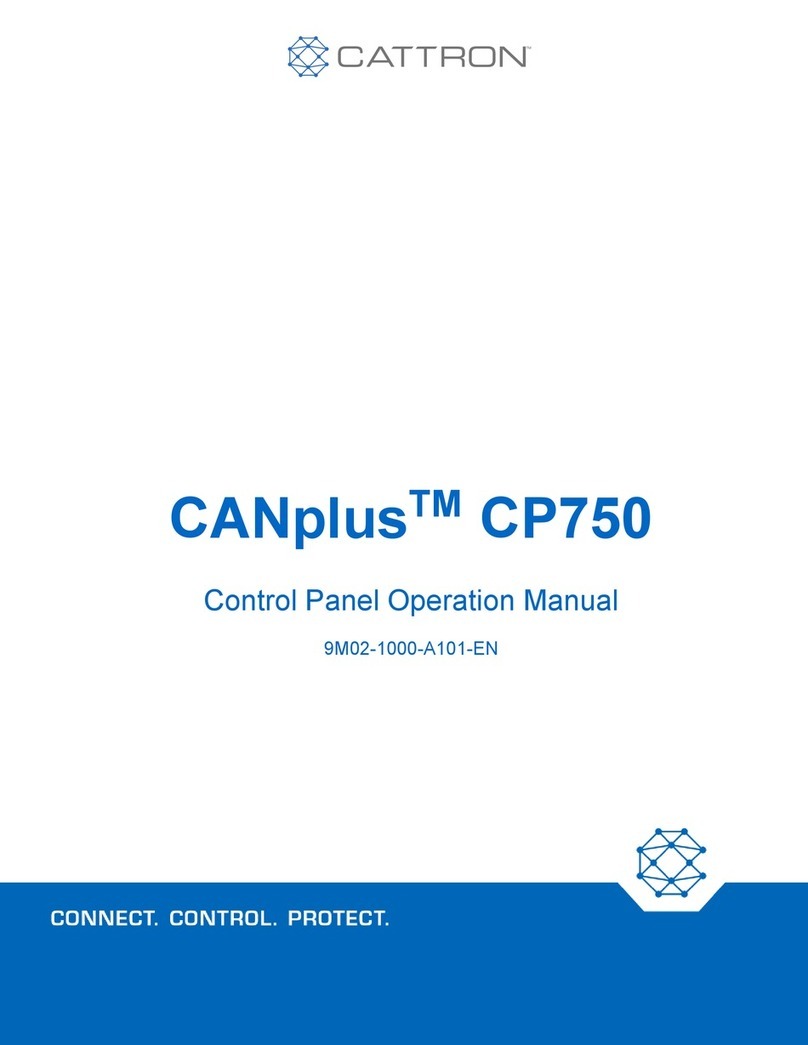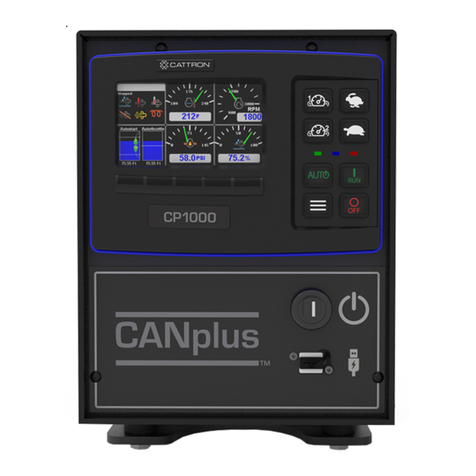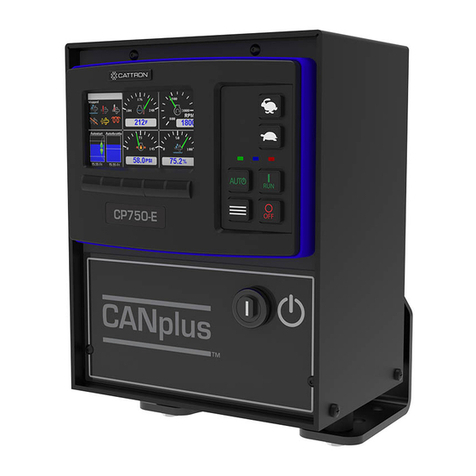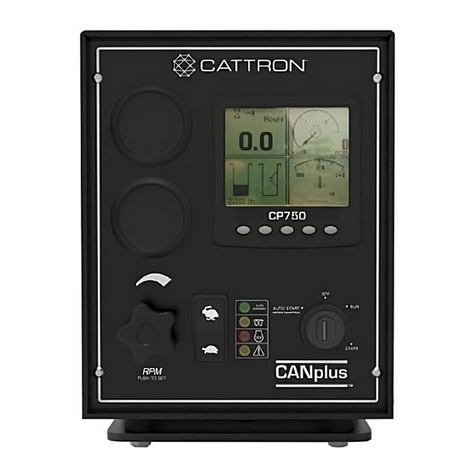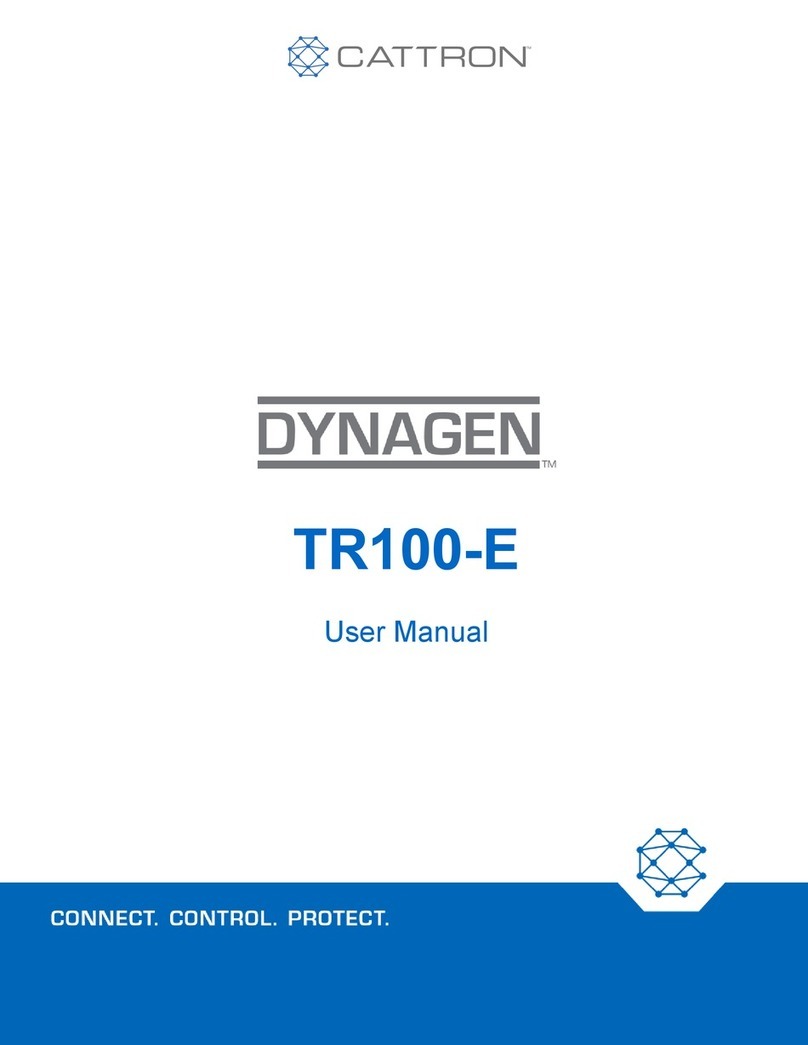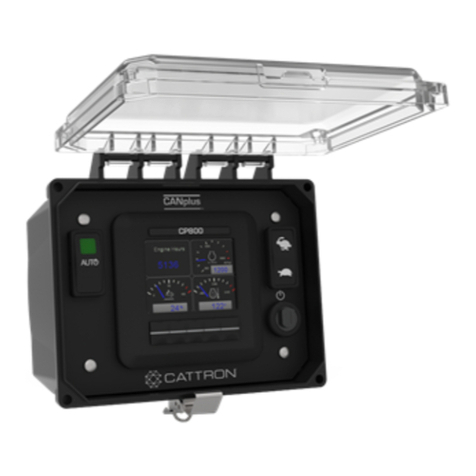
LOFATM EP250
Panel Operation and Troubleshooting Manual
Revision F
3 Operation
Turning the panel key to the run position starts a self-test which causes all LEDs to illuminate once, activates the
alarm output for one second and enables the fuel run/stop solenoid output. After self-test, the LEDs indicate the
state of the inputs they monitor. The normal indications are battery charge and oil pressure on most applications.
If these LEDs are not illuminated at this time, it may indicate the inputs are not properly connected.
The Preheat LED is illuminated when the key switch is turned to the run position if automatic preheat is configured
or if an external preheat control is connected (see the Preheat Options section). Preheat time varies from
application to application. After waiting for the Preheat LED to extinguish, the engine is cranked by turning and
holding the key switch in the start position until the engine starts. The key switch is spring loaded to return
automatically to the run position when released. The Preheat LED is illuminated during afterglow if enabled.
Note: The key switch is equipped with a mechanical start locking device.
An attempt to crank the engine again can only be made by turning the key switch to the off position to
reset the start locking mechanism.
If the engine is not started within 10 seconds of turning on the panel, the fuel run/stop solenoid output is turned off
to prevent battery discharge when the key switch is left in the run position. The fuel run/stop solenoid output is
turned off after 10 seconds even during preheating. As soon as the key switch is turned to the start position, the
solenoid output is enabled. The afterglow cycle begins when the key switch returns to the run position.
Note: If conditions do not warrant preheat, the engine may be started by turning the key to the start position
without waiting for the preheat time to expire.
Panel instrument power, including the hourmeter and voltmeter, is provided by the fuel run/stop solenoid output. If
the instruments do not power up when the key is turned to the run position, this indicates a problem with the
solenoid circuit (see the Fuel Run/Stop Solenoid Troubleshooting section).
After the engine starts, the panel electronics ignore all shutdown conditions for the first 10 seconds. This delay
eliminates the requirement to hold a by-pass override button during starting and allows the engine conditions such
as oil pressure to normalize. The 10-second timer starts when the key switch returns to the run position.
Note: Starter input is required for correct panel operation. If the starter motor input is not activated (connected
to battery positive) and the engine is started through another means (i.e., air starter) the engine will
shutdown 10 seconds after the key switch is turned to the run position.
To prevent unintentional engine shutdowns caused by intermittent conditions (for example, pressure spikes or
coolant movement), the panel requires a constant 1-second fault input to cause engine shutdown.
WHEN USED IN COMBINATION WITH MECHANICAL FLOAT TYPE SWITCHES, ENGINE
VIBRATIONS MAY PREVENT CONSTANT CONTACT CLOSURE.
THE PANEL CAN BE CONFIGURED TO SHUTDOWN WITH NO DELAY.
The panel has the ability to shut down the engine for over speed. Over speed will be indicated via a blinking
Battery Charge LED. The panel senses RPM by the frequency terminal of the alternator, proximity switch or
magnetic pick-up with the optional magnetic pick-up amplifier/divider.
